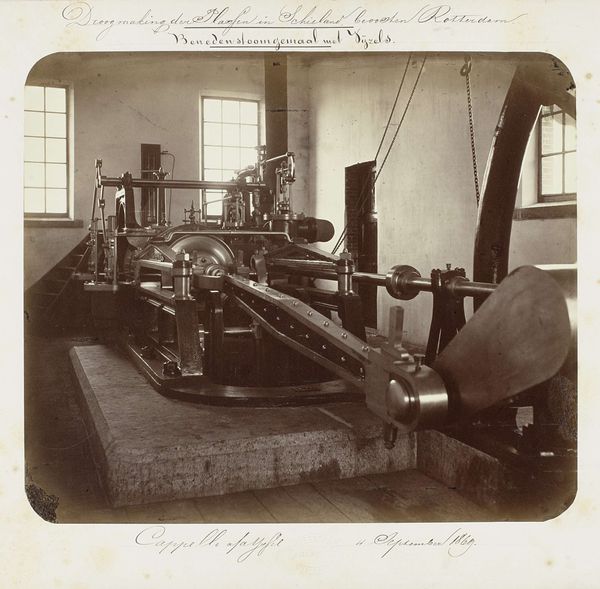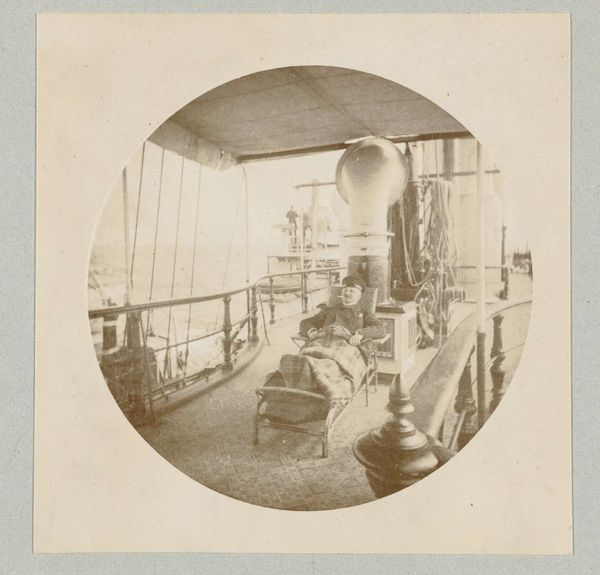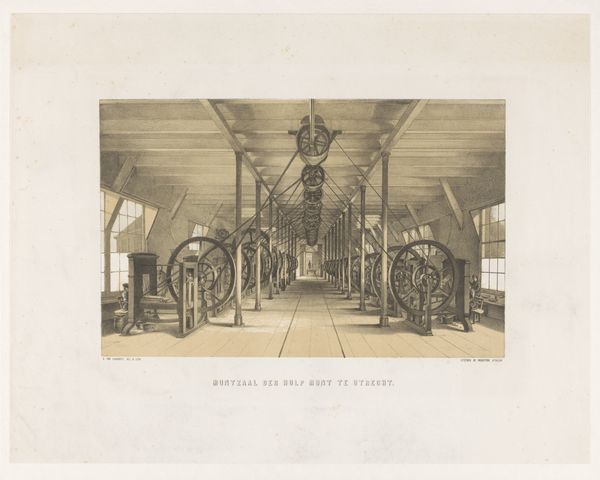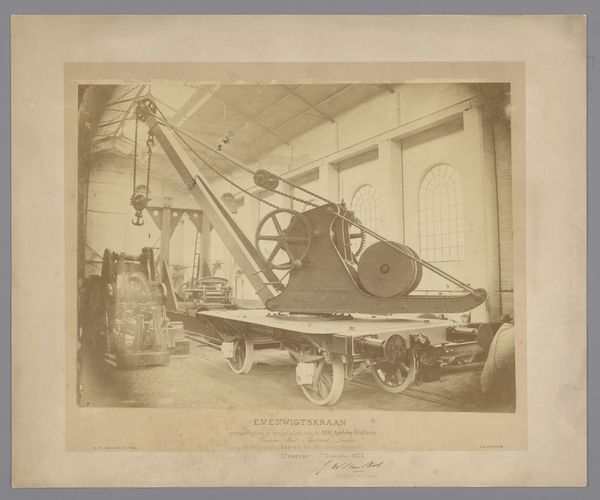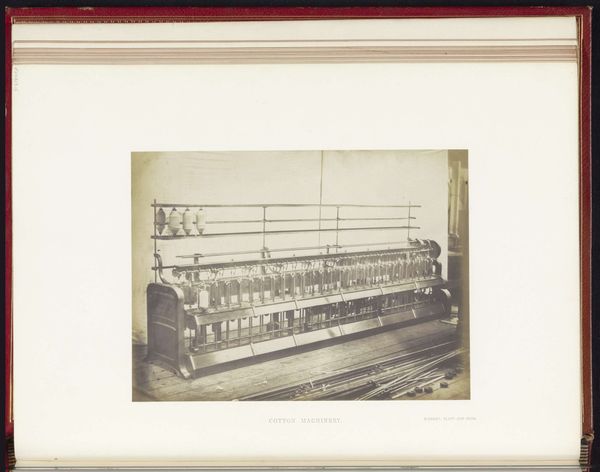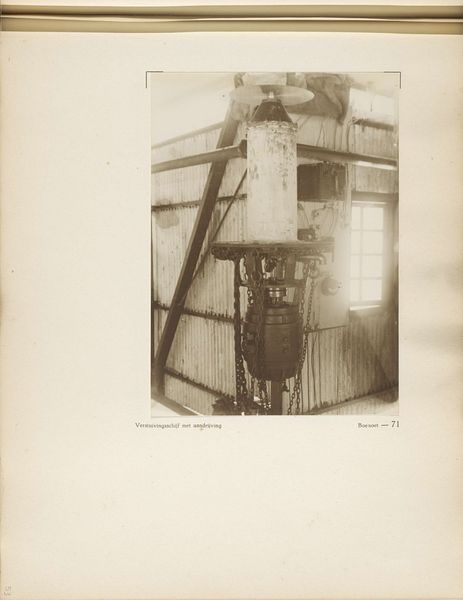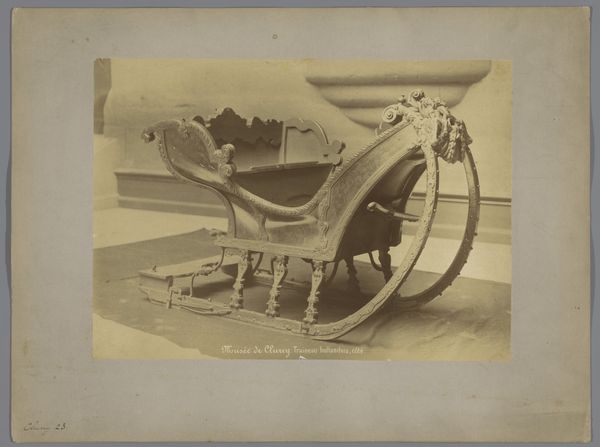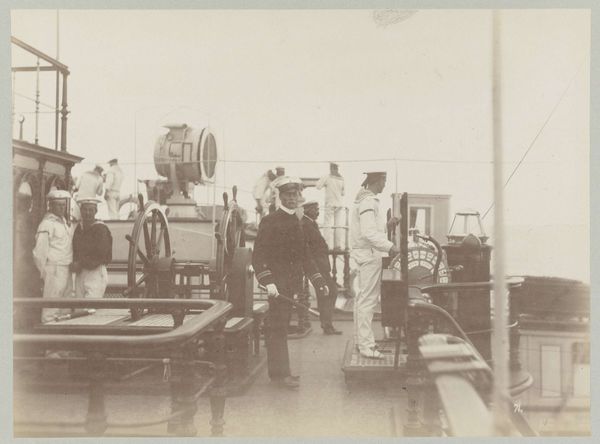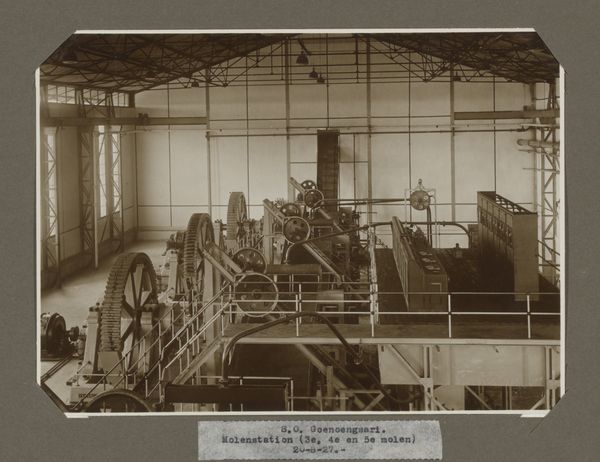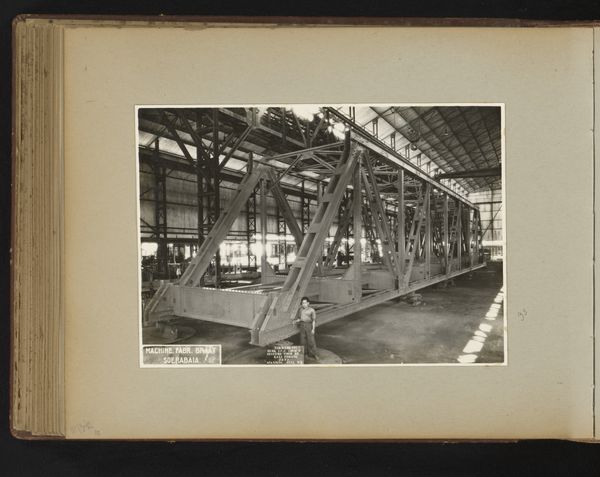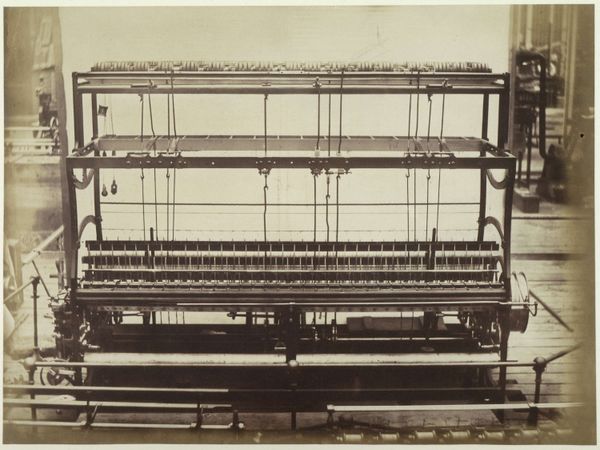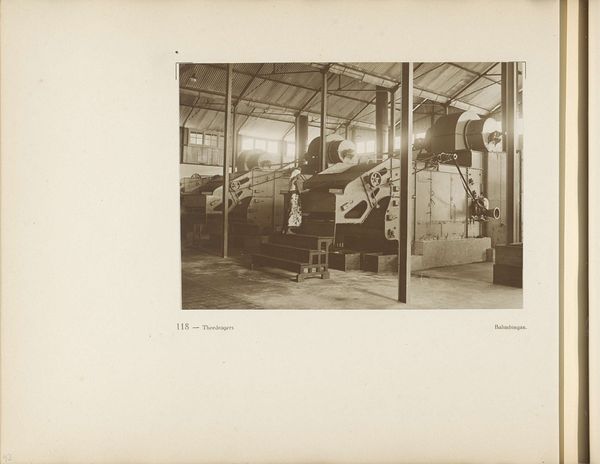
daguerreotype, photography
#
dutch-golden-age
#
daguerreotype
#
archive photography
#
photography
#
cityscape
#
history-painting
#
realism
Dimensions: height 32.3 cm, width 47.2 cm
Copyright: Rijks Museum: Open Domain
Editor: This is "Prins Alexander upper pumping station, Kralingscheveer," a photograph, possibly a daguerreotype, by Jacobus van Gorkom Jr., dated to around 1869. There's something stark and imposing about it, all these dark metallic forms in a bright space. What do you see in this piece? Curator: I see a portrait of progress, but one deeply intertwined with power. This pumping station represents technological advancement, a human attempt to control nature. But whose labor built this station? Whose land was drained and reshaped? These "achievements" often came at a steep cost for marginalized communities. Editor: So, it's not just about engineering; it's about the social implications of that engineering? Curator: Precisely. Look at the imposing scale of the machinery, rendered in the exacting detail of early photography. This wasn't just about flood control. It was about consolidating economic power and exerting dominance over the landscape, and the people who depended on that landscape for survival. How does that contrast with our present climate struggles? Editor: That makes me think about how technology isn't neutral, how it can be used to reinforce existing power structures. I had focused only on what the pumping station achieved; I did not realize the social questions raised by this photograph. Curator: Exactly. And by exploring these questions, we can engage critically with the historical narratives we've inherited, and better assess contemporary technologies. Editor: That’s really insightful. I appreciate that perspective, especially now. Curator: My pleasure. Thank you for prompting this dialogue!
Comments
rijksmuseum about 2 years ago
⋮
These iron machines were marvels of modern technology in their day, and made it possible to drain and keep Holland’s polders dry. The machines are presented as showpieces in these government-commissioned photos. To drain the lakes east of Rotterdam, engineers dug a canal and a peripheral waterway to flush away the water. Then they extracted the water with pumps at Kralingen, Capelle and Nieuwerkerk.
Join the conversation
Join millions of artists and users on Artera today and experience the ultimate creative platform.
